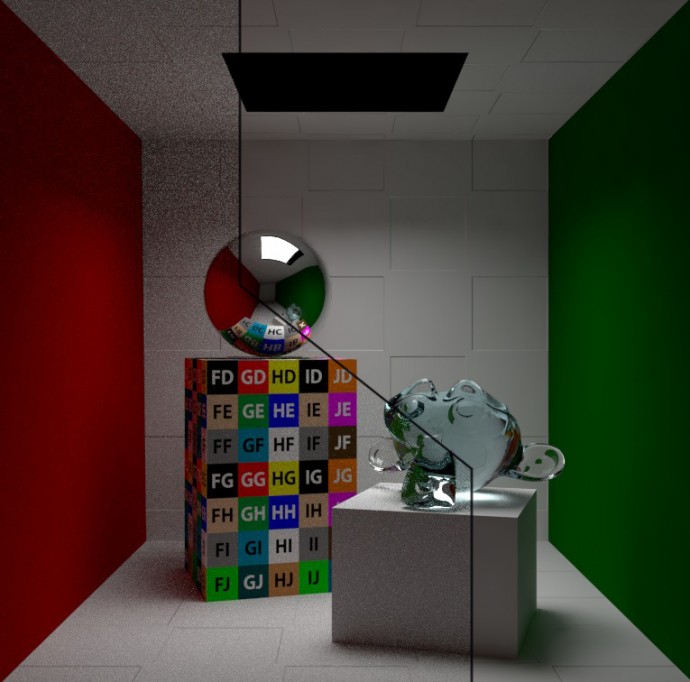
Model by 1DInc
Lukas Stockner has been working on yet another awesome Cycles feature, this time a sneaky method to reduce noise without actually rendering more samples.
Read more and download a Windows build from the BA thread.
To put it simply, “denoising” is a process of analysing your render and trying to shmoosh the noise/grain together and make it look clean.
A common side-effect of all denoising algorithms is that some detail is lost. It’s almost impossible for the computer to tell the difference between noise that you don’t want and noise that you do want (like details in a texture). To address this, as far as I can tell, Lukas has added options to denoise Direct and Indirect passes separately, which allow you to (potentially) smooth only the noise introduced by the rendering process and keep all the details of your textures in tact.
The example above is quite extreme – denoising is meant to be one last final step that will remove just the tiny bit of stubborn and subtle noise and make the image perfectly clean. Why? because the more noise you have to remove, the more details you’ll lose along with it. If you zoom in, you’ll see all sorts of nasty bits and blurred details that will flicker during an animation.
Here’s another great example by LazyVirus:

wow this is great news! I gather from this that a sufficiently high sample count will make this much more effective? It seems Cycles is that much closer to becoming a true production-ready renderer.
Hello
Is it a plugin or by default option of upcoming versions?
It’s not a plugin. At the moment it’s a special build you download (a separate version of blender). Lukas will be applying to do this during the google summer of code, and assuming everything works out it’ll eventually make it into the main version of blender.
looking forward to trying it out
If you shoosh the noise, does that mean you can render loud pants?
I stumbled across this denoising algorithm: http://dev.ipol.im/~mdelbra/rhf/delbracioTOG2014.pdf
Looks interesting, but I don’t know how quite how Cycles’ kernel works (or if it would be worth the memory to store per-pixel histograms).
Something like this? https://www.youtube.com/watch?v=JIrCNN59IEQ
it makes scene some blurry so the details disappear. that is not a solution like vray success :(